Issues I face personally
I’ll begin with some personal experiences. I use a wheelchair, and face issues with reaching devices all the time. Here are some photos I’ve taken when grocery shopping!
By the way, if you’re just looking for what the actual law says, skip ahead to What are the actual requirements?
This is a classic struggle: a touch screen for choosing what grocery I have on the scale.
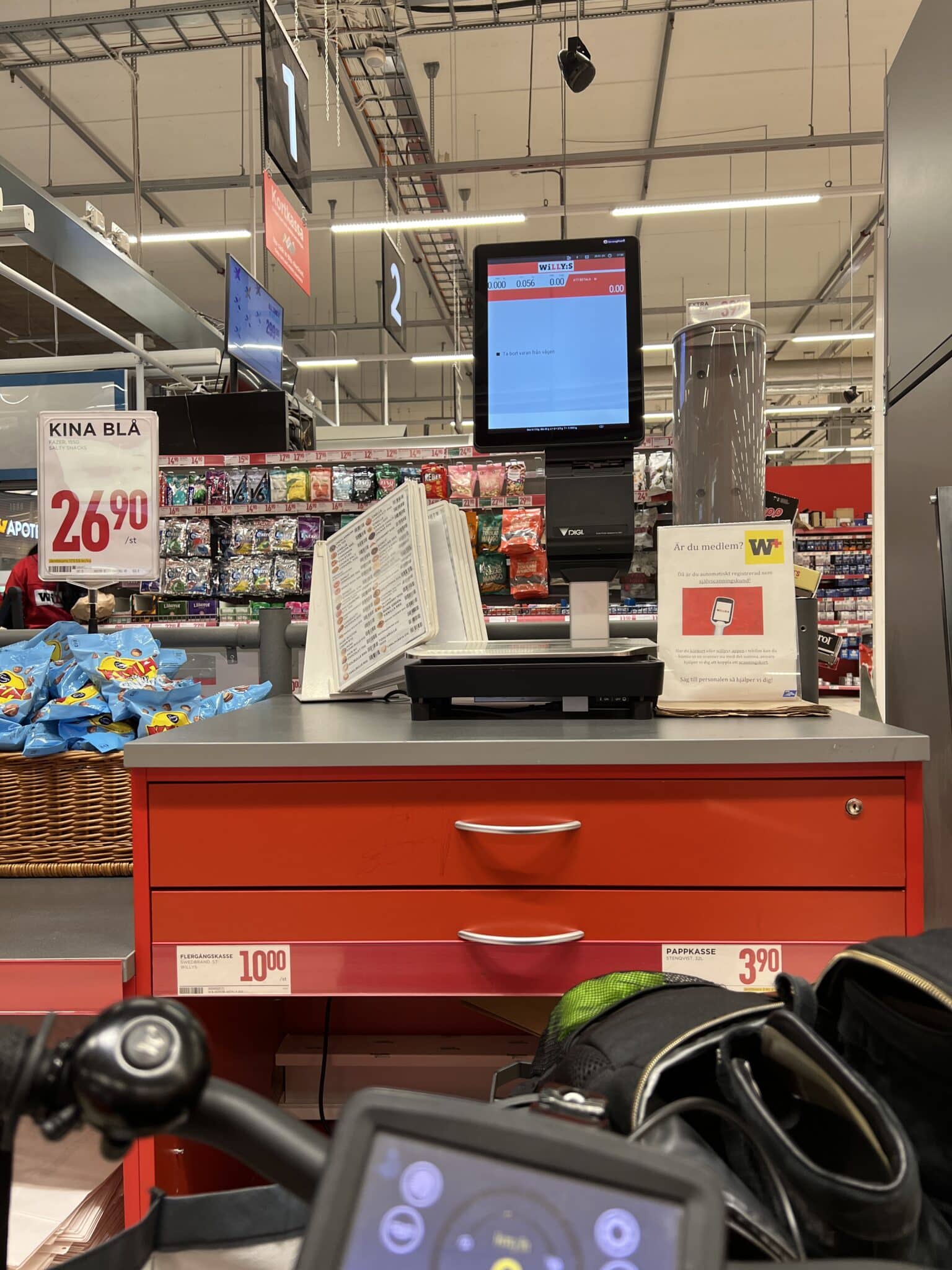
Way too high, and even if it would have been lower, there’s a table blocking my wheelchair from getting close.
Another common issue: payment terminals on gas stations. Here is a newly built charging pole for an electric vehicle. It’s obvious that they haven’t considered accessibility here at all. Can you spot the issues?
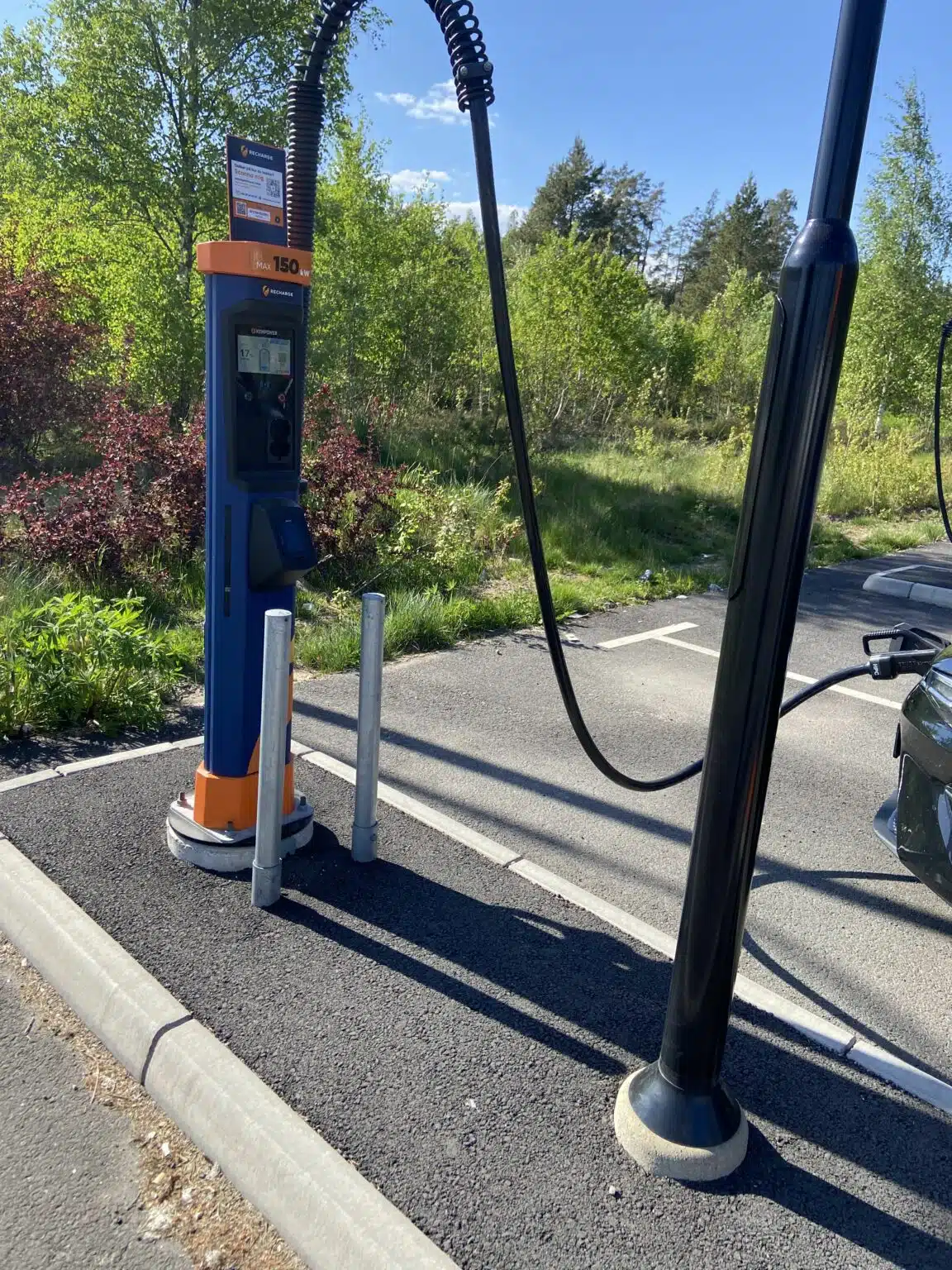
Well, the raised ground and two metal poles prevent me and other wheelchair users from getting to the actual charging post at all. And even if we learned how to magically hover above the ground and get there, the interactive touch screen is way too high to reach.
This has been a problem for a long time with regular petrol pumps, but in those cases you often have the alternative to ask the people at the cashier to activate the pump and then pay inside the store. This is often not an option with electric car chargers, making it a more pressing problem.
Sidenote: many cars are adapted so that people without use of their legs, or with other motor impairments, can drive them independently. Check out this video where Kathryn Granger showcases how she drives and gets her wheelchair in the car.
Moving on: a lot of new “smart delivery boxes”, like the one below, cause problems for me. The first challenge is reaching the touch screen. Then the lottery starts. Is my package in one of the around 50% boxes I can reach? Or is it in one of the top boxes I can’t reach?
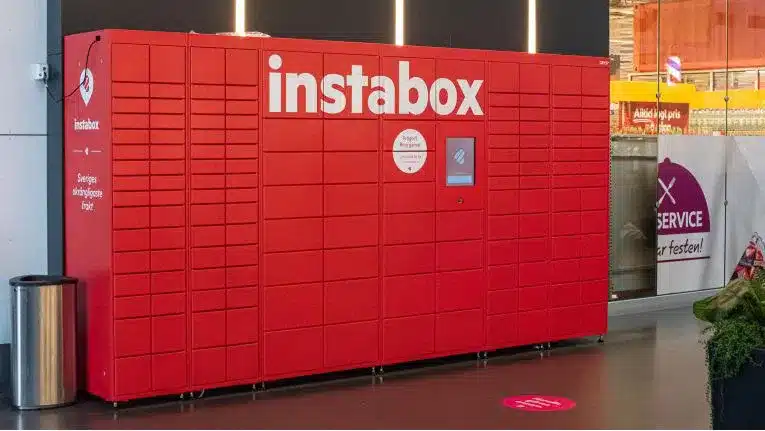
Self-service check-in terminals at airports are often also difficult for me. Feels like a lottery every time! Will I be able to use them or have to look around for help.
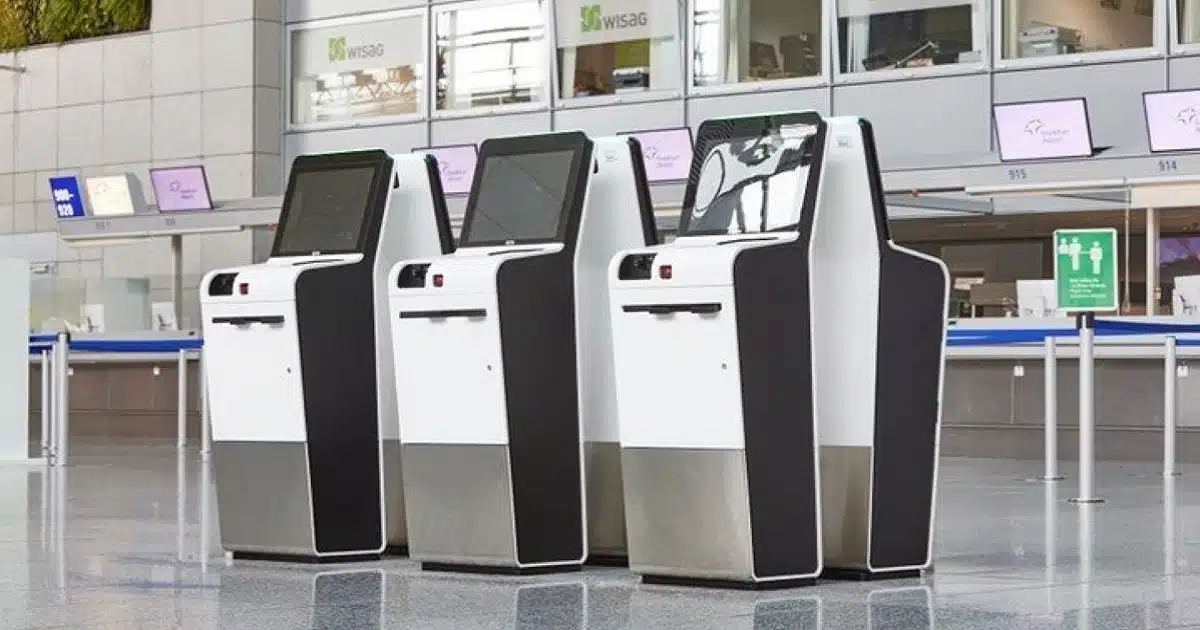
So a lot of the issues that me and other consumers with motor impairments face are about reaching stuff.
Issues for blind users
Another group that is heavily affected by inaccessible touch screens and other physical devices are blind folks.
Here, most major exclusion comes down to the fact that you’re required to use a touch screen that does not have screen reader support. For instance, you often need to input numbers on the smart post box touch screen display.
“Oh, but supporting screen readers must cost a ton of money to support”, you may think. Well, there are often creative solutions if you have accessibility in mind from the start of projects. Let’s look at a few..
Nice solutions are already out there
Here in Sweden, our state funded postal service “Postnord” also has smart post boxes. But opening those boxes is achieved by using an app on your own device instead of a touch screen.
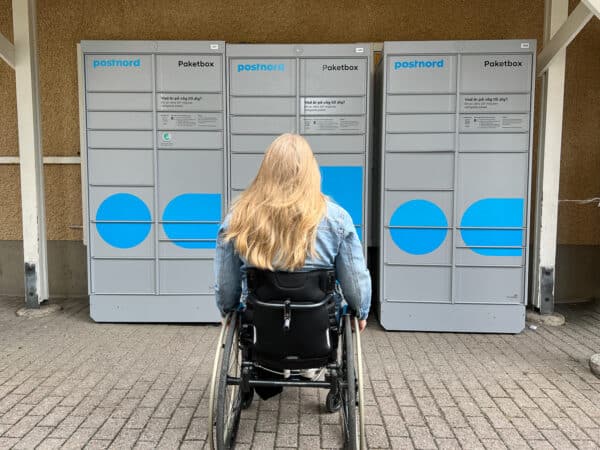
The app supports the users own screen reader, and voilá: no problem opening the boxes!
There’s still the issue of reaching the box for me and others with motor impairments, and I heard from a blind colleague that he often struggles with finding which door has opened. He listens for the click of the door and starts waving his arms close to the device to find it. A bit of subtle sound design would do the trick!
The Postnord app shows that good solutions are already out there. Let’s look at a few more positive examples!
In Norway, they let you choose if you only can reach the middle boxes (“Luker på midten”), or all of them (“Alle luker”), when choosing delivery methods. Very nice!
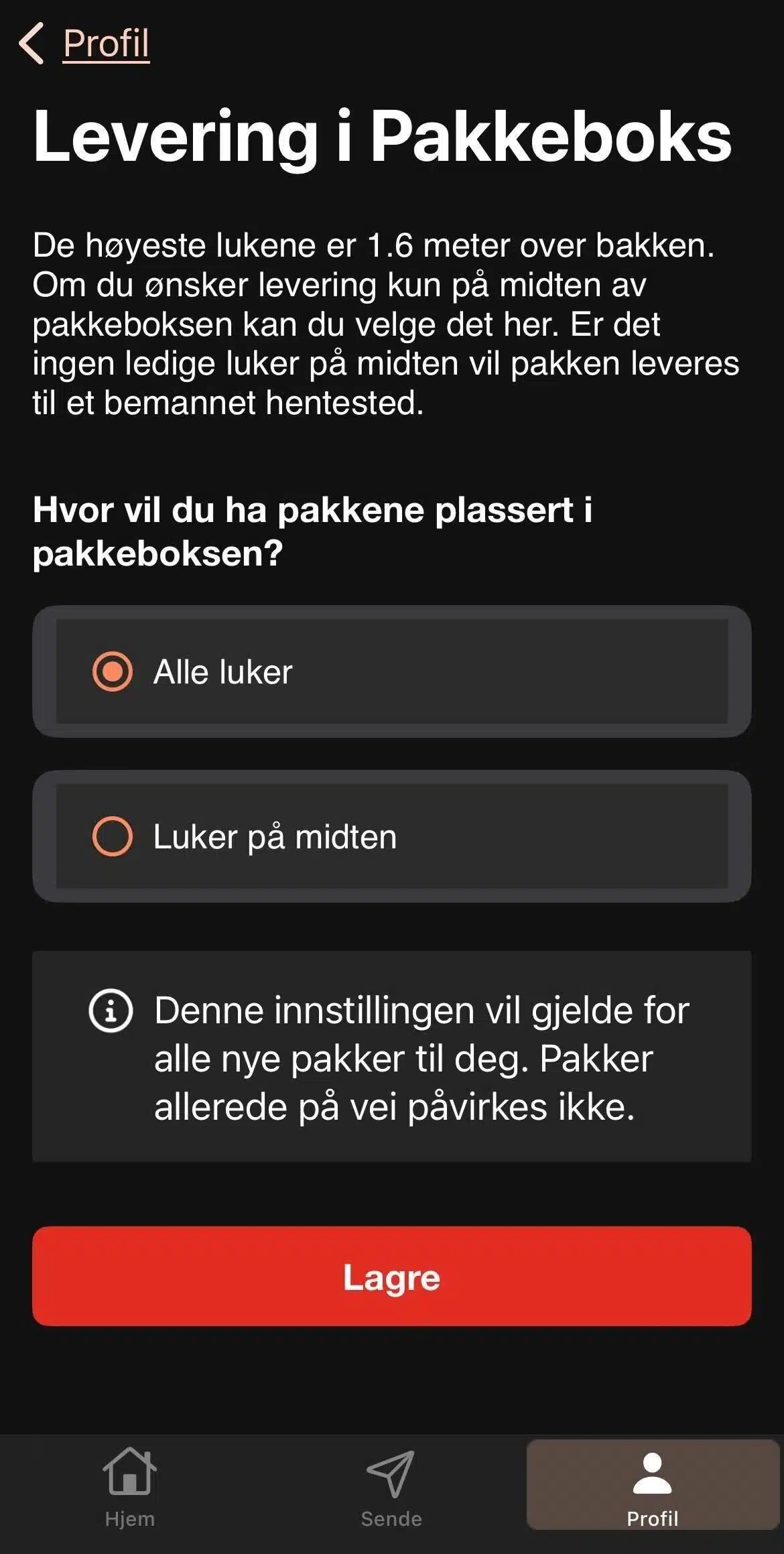
When activating your tickets in public transportation in Stockholm, here a ferry, the devices are often available at different heights. Great for me! Great for kids who want to blip their parent’s ticket! Great for anyone!
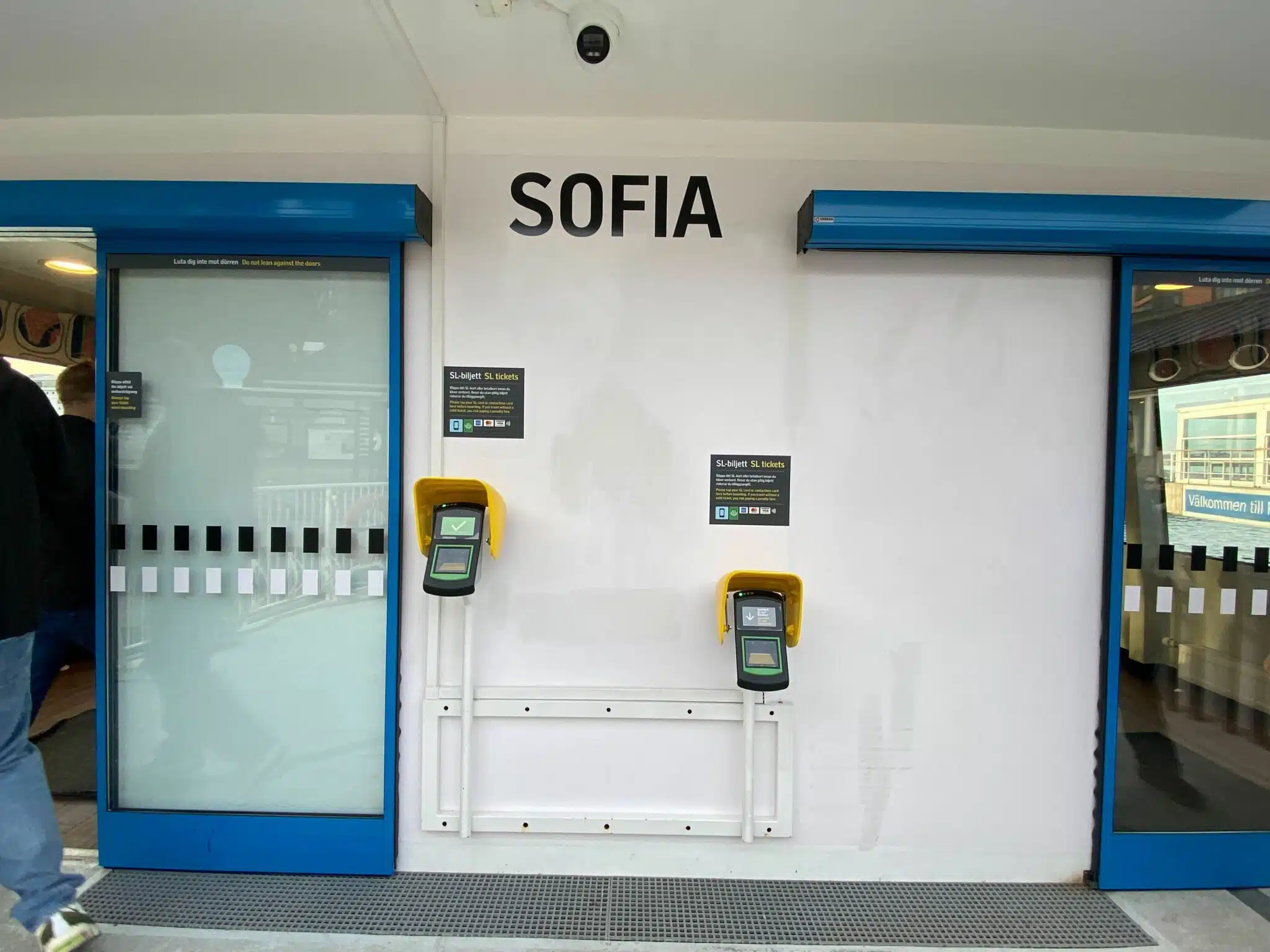
Another example of terminals at different heights.
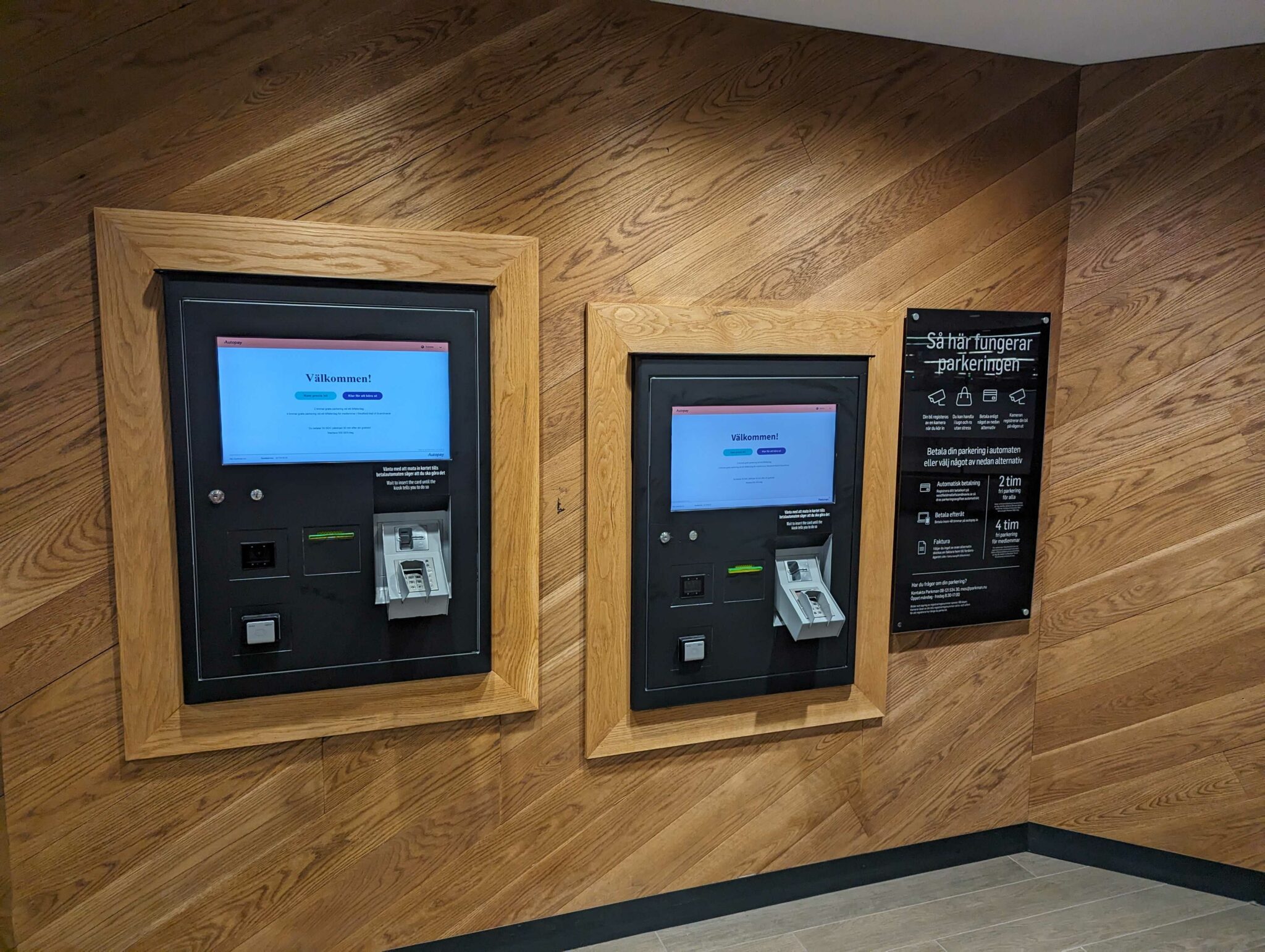
On a “Max Burgers” restaurant, I can press a button at the bottom corner of the touch screen to have the top part of the interface move down to a more reachable height. Creative thinking! Although I still found it hard to reach the top most buttons when the interface had been moved down, so they could probably do this a bit better.
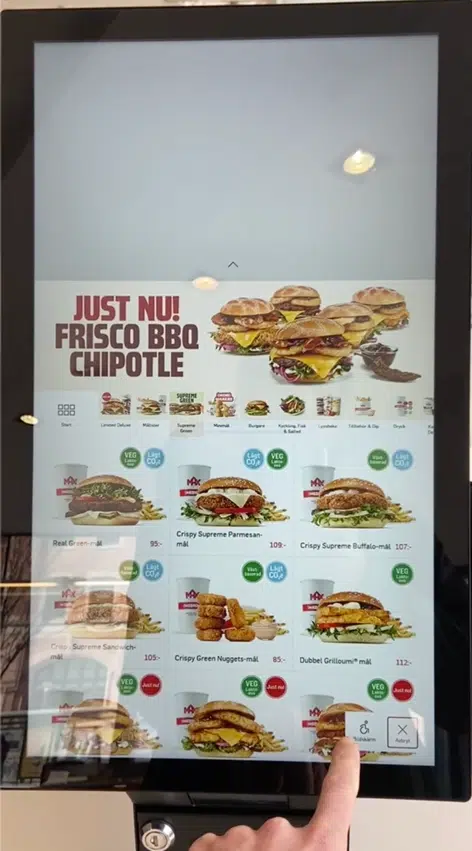
Look closely at this ATM:
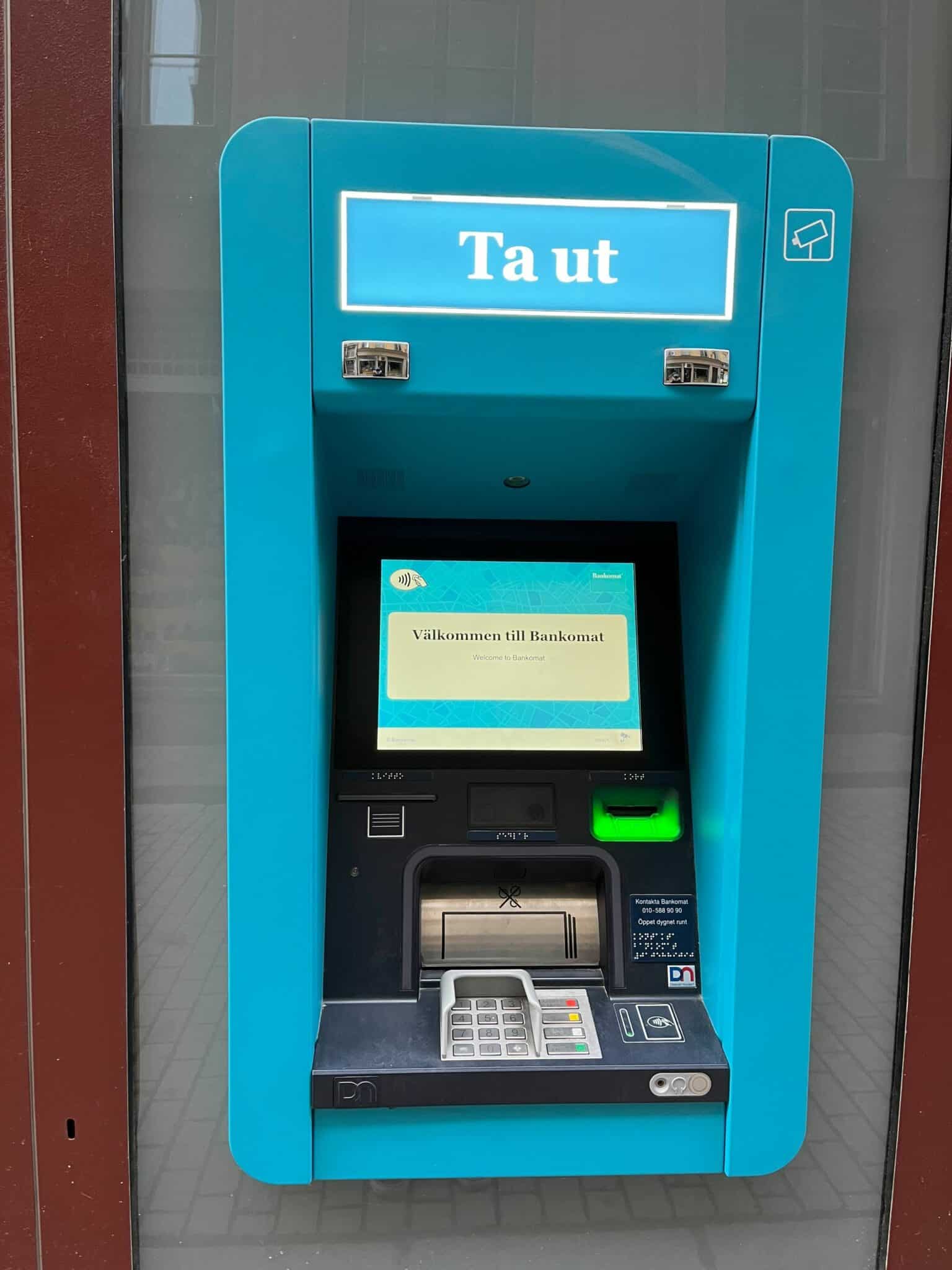
Notice the headphone jack? It makes it possible for the user to get spoken instructions, and not have sensitive bank details be shouted out through a speaker.
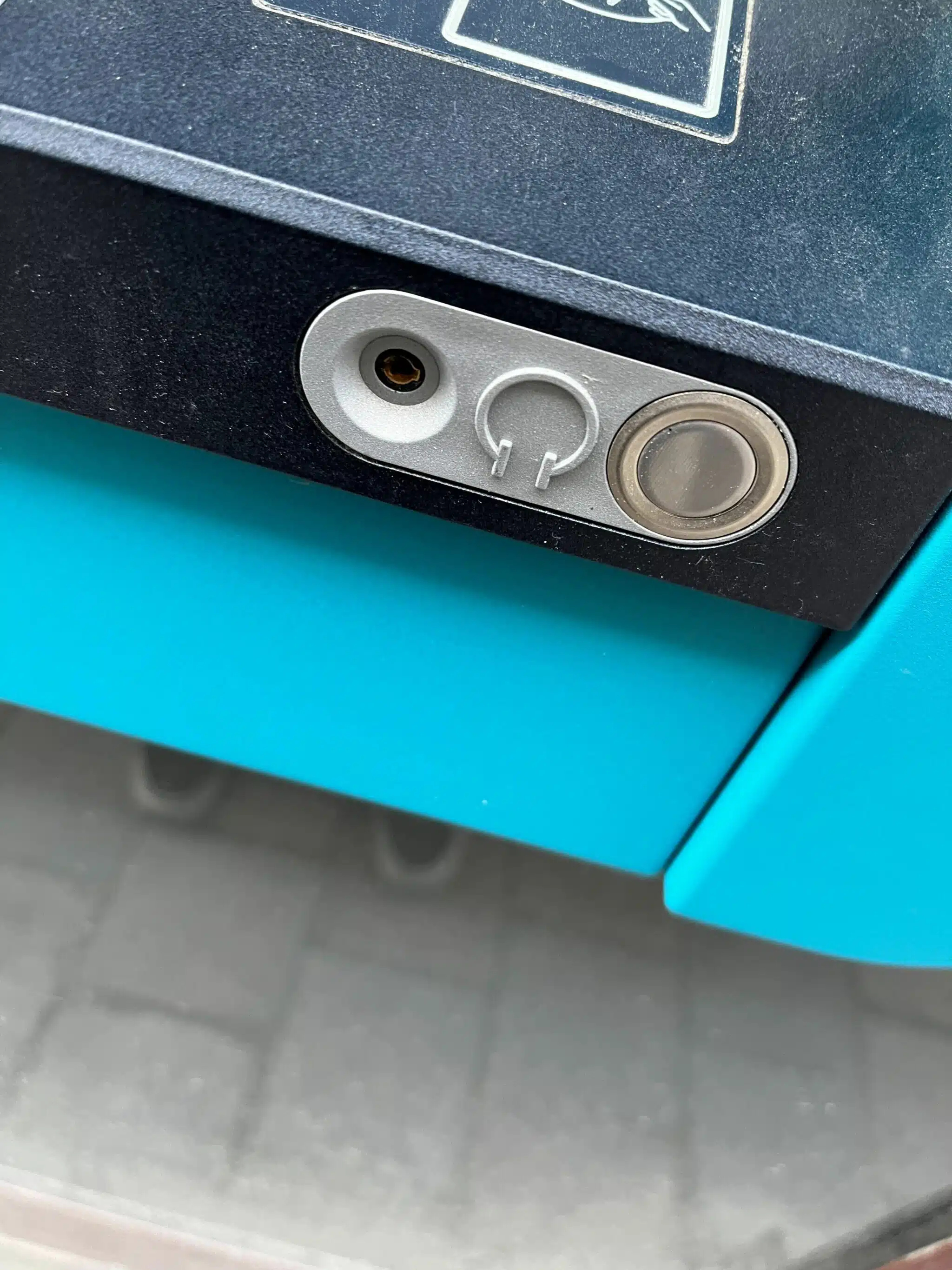
Finally, a few years back we made a short article including a video of an accessible queue system that has a built in screen reader.
So there are great solutions out there already, to get inspired by!
What does the EU law actually require?
I’ll now summarize some key points in the European Accessibility Act relating to the topic of kiosks, touchscreens and similar devices. This is mainly taken from the following sections of the actual Directive 2019/882:
- Chapter 1, Article 2 for which products are covered
- Annex 1 for the actual accessibility requirements
- Annex 2 for examples and possible solutions to fulfill the requirements
Feel free to open the Directive and dig in yourself, but below are some highlights I’ve extracted. We’ve also got a general article on the European Accessibility Act that you can check out.
What products are covered
Some parts straight from the directive:
The following self-service terminals:
- payment terminals
- the following self-service terminals dedicated to the provision of services covered by this Directive:
- automated teller machines (ATM:s)
- ticketing machines
- check-in machines
- interactive self-service terminals providing information, excluding terminals installed as integrated parts of vehicles, aircrafts, ships or rolling stock
So in a nutshell: self-service payment terminals and basically any self-service terminal related to e-commerce or banking (services covered by the directive).
When do we need to comply?
The European Accessibility Act covers products that are “placed on the market after 28 June 2025”. So you will not have to trash all your current products! You’re allowed to keep them for another 20 years, or until they need to be replaced. So focus on the new products you’re shipping, not the ones already out there.
Here’s the exact phrasing in the Directive:
Given the cost and long life-cycle of self-service terminals, it is appropriate to provide that, when such terminals are used in the provision of services, they may continue to be used until the end of their economic life, as long as they are not replaced during that period, but not for longer than 20 years.
What are the actual requirements?
In a nutshell, the devices covered needs to be accessible by for consumers:
- Without vision
- With limited vision
- Without perception of color
- Without hearing
- With limited hearing
- Without vocal capability
- With limited manipulation or strength
- With limited reach
- With risk of photosensitive seizures
- With limited cognition
The specific requirements are laid out in Annex 1 of the Directive. Here are some highlights I’ve extracted.
the product shall avoid modes of operation requiring extensive reach and great strength
What’s extensive reach and great strength? Well that’s detailed in the EN 301 549 standard, chapter 8 “Hardware”, which includes requirements like having interactive elements at a height between 38-122 cm:
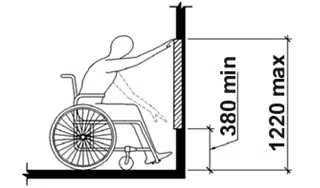
when the product uses visual elements it shall provide for flexible magnification, brightness and contrast
So you should aim to have zooming features and similar controls in the interfaces. If you don’t, you have to instead meet quite rigid requirement of text sizes. For instance, if the normal viewing distance is 50 cm from the screen, the minimum allowed character height is 6.1 mm. Check out the specifics of text sizes in chapter 5.1.4 “Functionality closed to text enlargement”.
when the product provides for communication, including interpersonal communication, operation, information, control and orientation, it shall do so via more than one sensory channel.
Fancy language..! But in plain words: you can’t only show something visually on the screen, there needs to be another “sensory channel”, for instance sound, to give that information. Basically: support a screen reader or similar.
when the product uses colour to convey information, indicate an action, require a response or identify elements, it shall provide an alternative to colour
So users with color vision deficiencies also can understand the information you’re providing.
Here are some requirements that are specific to self-service terminals:
shall give the possibility to extend the time given
shall allow for the use of personal headsets
when the product uses audio or audible signals, it shall be compatible with assistive devices and technologies available at Union level, including hearing technologies such as hearing aids, telecoils, cochlear implants and assistive listening devices
So those were some of the general requirements laid out in the Directive, with a bit of details from the EN 301 549 standard. There are many more, and a fair bit to wrap your head around. Most touch screens, kiosks and other physical devices are far from compliant, so there’s likely a big effort needed to make this sector more accessible in the years ahead.
Want a helping hand?
If you want a detailed checklist/requirement document, we’ve created one! But it’s taken us a lot of time and effort, more than we’re giving away for free here. But feel free to contact us if you’re interested in buying that.
Also: if you want help from accessibility experts like me to analyze and recommend solutions for your specific product or service – you’ll find the contact details in the footer below.
Thanks for putting in the effort to make these devices more accessible for me and many others with disabilities!